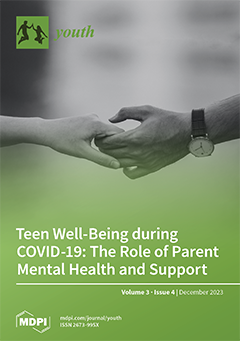Active school transportation (AST), including walking or cycling, is a common practice across India contributing to physical activity accumulation among children and youth. Despite the proven health benefits of AST, rising air pollution levels may offset these benefits and discourage AST. With climate
[...] Read more.
Active school transportation (AST), including walking or cycling, is a common practice across India contributing to physical activity accumulation among children and youth. Despite the proven health benefits of AST, rising air pollution levels may offset these benefits and discourage AST. With climate change and severe heat waves exacerbating poor air quality, this study aimed to examine the association between perceptions of air pollution as a problem and AST among children and youth in India. No previous studies have assessed AST determinants from a child or youth perspective in India; thus, this cross-sectional, observational study surveyed 1042 children and youth from 41 urban and rural schools. Logistic regression models were conducted and stratified by age group, gender, and urban vs. rural location. Children and youth who perceived air pollution to be a problem were less likely to engage in AST (OR = 0.617, 95% CI = 0.412, 0.923,
p < 0.001), with AST varying based on age, gender, and location. The perception of air pollution as a problem was associated with a lower likelihood of engaging in AST in the 5- to 12-year age group (OR = 0.366, 95% CI = 0.187, 0.711,
p = 0.003) but not in the 13- to 17-year age group. Similarly, males (OR = 0.528, 95% CI = 0.306, 0.908,
p = 0.021) and rural residents (OR = 0.569, 95% CI = 0.338, 0.956,
p = 0.033) who perceived air pollution as a problem were less likely to engage in AST; however, this association was not found in females or urban residents. These findings highlight the importance of child and youth perceptions of the environment in not only informing public health advisories for air quality and safe outdoor activity, but also for designing targeted interventions considering sociodemographic differences in AST among children and youth in India.
Full article




